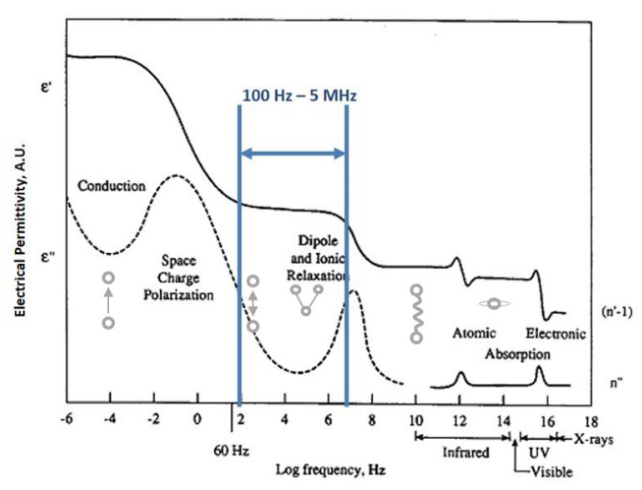Dielectric sensing in water
The movement of ions in solution (an electrolyte) is a field of active study. At very low concentration an electrolyte can be thought of as a very dilute plasma which offers tantalizing possibility of plasma/plasmonic charge density waves. These waves have been proposed but so far measurements have been unable to detect them potentially due to the strong local disturbance of charge density coherence. At high density (ionic liquids) charge coherence is strong and many interesting phases of the fluids can be seen. Ionic mobility and behaviour are relevant to society for the analysis of the salt content of drinking/surface water, the ionic content after blood dialysis and the scaling behaviour of “hard water” inside waterlines. Ionic content of water can be measured very precisely using mass spectrometry but the distribution of the ions and their physiochemical state in the fluid is not so easy to determine.

In this project we aim to develop a new approach to the measurement of the dielectric response and to use that new technology for the analysis of electrolytes and to study in particular the problem of the conductivity of mixed (multi-component) solutions. The new approach uses the Maxwell-Lodge effect ([1] the classical analogy of the Aharonov-Bohm effect) to create an electric field and a current inside the fluid without electrodes and without magnetic fields. This unique situation avoids shielding by charged (double-)layers, avoids contact potentials and avoids interference from the magnetic susceptibility. The current will also be detected using contact-free potentials induced by the changing magnetic vector potential. The development of this new measurement strategy will subsequently be used to shed light on the movement of ions in solution, an area that has many applications, quite some phenomenological heuristic development but unexplored theoretical questions.

A first version of this setup has been built but ran into electronics problems. These have been solved
and we are now ready for a second try at this.
